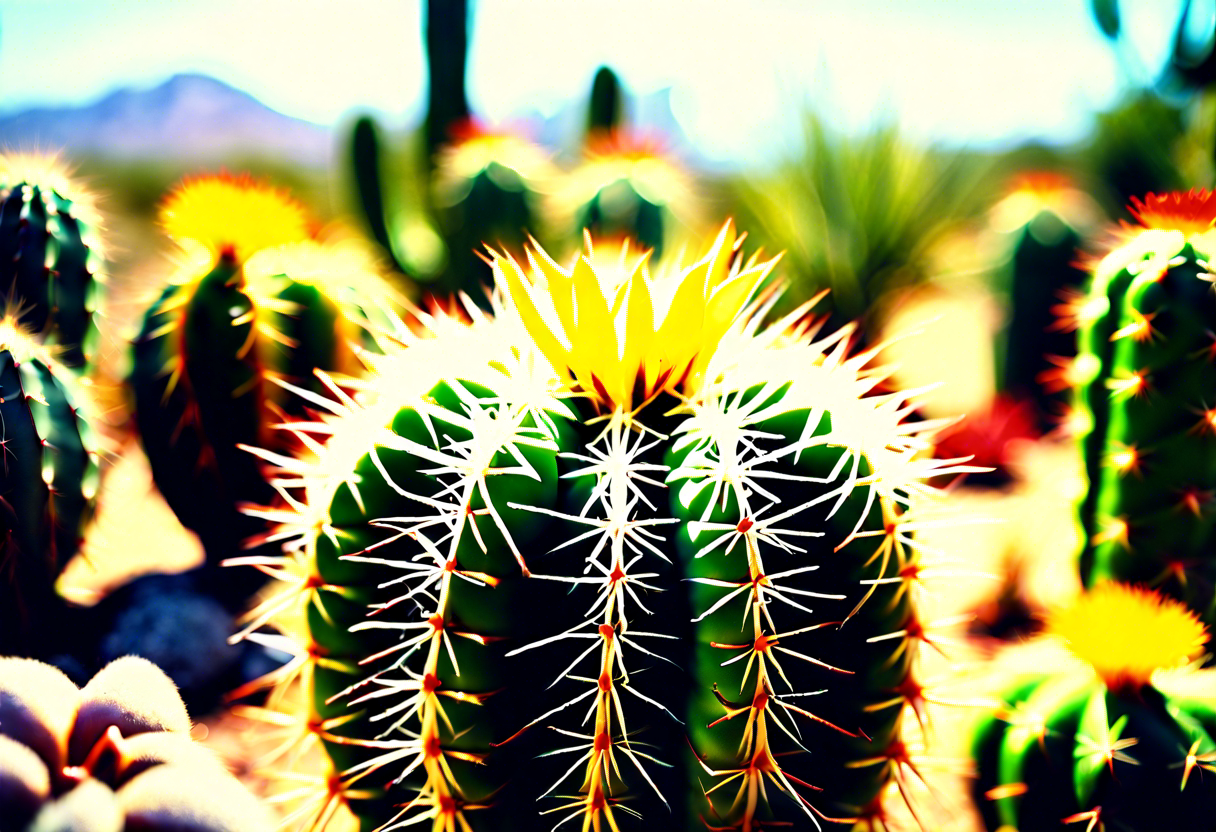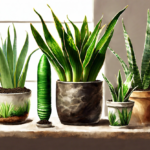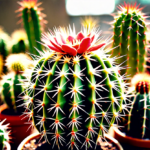Types of Cactus Varieties: A Comprehensive Guide
When it comes to cacti, there is a staggering variety of shapes, sizes, and colors to choose from. Each cactus variety possesses its own unique characteristics and requires specific care. In this comprehensive guide, we will explore some of the most popular types of cactus varieties, providing valuable information for both novice and experienced growers.
1. Opuntia: Commonly known as the paddle cactus or prickly pear, Opuntia species are characterized by their flat, paddle-shaped stems that are typically covered in spines. These cacti produce vibrant flowers and edible fruits, making them a favorite among cactus enthusiasts. Opuntias thrive in bright sunlight and well-draining soil.
2. Echinocactus: Also known as the barrel cactus, Echinocactus varieties are recognized for their rounded shape and prominent ribs. These cacti often develop striking yellow or red spines that complement their impressive size. Barrel cacti prefer dry, desert-like conditions and require minimal watering.
3. Rebutia: Rebutia cacti, commonly referred to as crown cacti, are characterized by their small size and clusters of colorful flowers. These cacti are ideal for indoor gardens due to their compact growth habit. Rebutias thrive in well-draining soil and bright, indirect sunlight.
4. Mammillaria: Mammillaria species are popular cacti known for their globular shape and dense spines. These cacti often produce exquisite flowers in shades of pink, purple, or yellow. Mammillarias require ample sunlight and a well-draining soil mix to thrive.
5. Gymnocalycium: Gymnocalycium cacti are native to South America and are admired for their unique, ribbed bodies and colorful flowers. These cacti are well-suited to indoor cultivation due to their compact size. Gymnocalyciums prefer bright, indirect light and minimal watering.
6. Ferocactus: Ferocactus varieties, commonly known as barrel cacti, are characterized by their cylindrical shape and prominent spines. These cacti come in various sizes, with some reaching several feet in height. Barrel cacti thrive in arid environments and require minimal watering.
7. Ariocarpus: Ariocarpus cacti, also known as living rocks, are renowned for their unique appearance that camouflages them among rocks and soil. These slow-growing cacti produce stunning flowers and require well-draining soil and ample sunlight.
8. Epiphyllum: Epiphyllum cacti, commonly referred to as orchid cacti, are appreciated for their beautiful, fragrant flowers that bloom at night. These epiphytic cacti grow on trees or rocks and require a well-draining soil mix and partial shade.
9. Selenicereus: Selenicereus varieties, often referred to as night-blooming cereus, are known for their large, showy flowers that open during the night. These cacti thrive in warm climates and require bright, indirect light and well-draining soil.
10. Escobaria: Escobaria cacti are small, globular cacti with spines that are often arranged in attractive patterns. These cacti produce eye-catching flowers and require a well-draining soil mix and ample sunlight to thrive.
These are just a few examples of the vast array of cactus varieties available for enthusiasts to cultivate. Each cactus variety possesses its own unique charm and beauty, making them the perfect addition to any indoor or outdoor garden.
Common Growing Conditions for Different Cactus Varieties
When it comes to growing cacti, it’s essential to understand that different cactus varieties have distinct growing conditions. While cacti are renowned for their ability to tolerate harsh environments, providing the right conditions will ensure their optimal growth and overall well-being. In this article, we will explore the common growing conditions that different cactus varieties require.
Light
Cacti are known to thrive in environments with abundant sunlight. Most varieties of cacti require at least six hours of direct sunlight each day. However, some species, such as the Christmas cactus (Schlumbergera spp.), prefer bright, indirect light. It’s crucial to understand the lighting requirements of your specific cactus variety to ensure it receives the appropriate amount of light to flourish.
Temperature
Most cacti varieties are adapted to warm and arid climates, making temperature an important factor in their care. Generally, cacti prefer temperatures ranging from 70°F to 90°F (21°C to 32°C) during the day and slightly cooler temperatures at night. However, certain desert cactus varieties can tolerate extreme heat during the day and significant drops in temperature at night.
Watering
One of the most common mistakes made in cactus care is overwatering. Cacti are succulent plants that store water in their stems, allowing them to survive in arid conditions. Overwatering can lead to root rot and other issues. As a general rule, allow the soil to dry out completely between waterings and adjust the frequency based on the cactus variety, season, and climate conditions. It’s always better to underwater than to overwater your cacti.
Soil and Potting
Cacti prefer well-draining soil to prevent waterlogged roots. A suitable mix can include a combination of sand, perlite, and regular potting soil. It’s essential to choose a pot with drainage holes to ensure excess water can freely escape. Repotting your cacti every two to three years can also promote healthy growth.
Fertilizer
While cacti are generally low-maintenance plants, they can benefit from occasional fertilization during their active growing season, which is typically spring and summer. Use a balanced, water-soluble fertilizer specifically formulated for cacti and follow the instructions on the label. Be cautious not to over-fertilize, as this can harm your cactus.
Humidity
Most cacti varieties thrive in low humidity environments, mimicking their natural desert habitats. While they can tolerate higher levels of humidity for short periods, excessive humidity may result in fungal infections and other issues. Providing good airflow and avoiding excessively humid conditions will help maintain the health of your cacti.
Understanding the common growing conditions for different cactus varieties is crucial for their successful cultivation. By providing the right amount of light, temperature, water, well-draining soil, and appropriate humidity levels, you can ensure the optimal growth and well-being of your cacti. Remember to always research the specific requirements of your cactus variety to provide the best care possible.
Rare and Exotic Cactus Varieties: A Guide to Care
Introduction
Cacti are known for their unique and intriguing shapes, but some varieties take it to the next level with their rare and exotic features. These extraordinary cacti can add a touch of fascination and wonder to any collection or indoor garden. In this guide, we will explore the care techniques specific to rare and exotic cactus varieties, ensuring their health and vitality.
1. Choosing the Right Rare Cactus Variety
When it comes to rare cactus varieties, there are numerous options available. It’s essential to do your research and select a cactus variety that aligns with your preferences and the growing conditions you can provide. Some popular rare cacti include the Moon Cactus, Fairy Castle Cactus, and the Brain Cactus. Each of these varieties has its unique growth habits and care requirements, making it important to understand their needs before bringing them into your home.
2. Light and Temperature Requirements
Rare and exotic cactus varieties often have specific light and temperature requirements. Most cacti thrive in bright, indirect light, and this holds true for rare varieties as well. However, some rare cacti may require more shade or filtered light to prevent sunburn. It’s crucial to find the perfect balance and place your cactus in a location where it receives the appropriate amount of light.
Regarding temperature, most rare cactus varieties prefer warm climates. However, some varieties, such as the Christmas Cactus, appreciate a slight drop in temperature during the winter. It’s beneficial to research the specific temperature preferences of your rare cactus variety to ensure optimal growth.
3. Watering and Soil Needs
Rare and exotic cactus varieties generally have water requirements similar to common cacti. These plants are adapted to arid conditions and prefer infrequent but deep watering. Overwatering can lead to root rot and other issues, so it’s crucial to let the soil dry out completely between waterings. Moreover, when watering rare cacti, it’s best to use a watering can with a narrow spout to provide targeted watering and avoid wetting the foliage unnecessarily.
In terms of soil, these cactus varieties require well-draining soil to prevent root rot. A mixture of cactus potting soil and perlite or sand works well to enhance drainage. Avoid overcompacting the soil, as rare cacti have sensitive root systems that can easily be damaged.
4. Fertilizing and Repotting
Fertilizing rare cactus varieties can help promote healthy growth and vibrant blooms. During the growing season, typically in spring and summer, you can use a specialized cactus fertilizer diluted to half strength. Apply the fertilizer once a month for optimal results. However, it’s essential not to fertilize during the dormant period in winter, as this can hinder the cactus’s natural growth cycle.
Repotting rare cactus varieties should be done infrequently, approximately every two to three years. When repotting, choose a pot that is slightly larger than the current one, allowing room for the cactus to grow. Use fresh, well-draining soil during the repotting process, and handle the cactus with care to avoid injuring its delicate spines.
Rare and exotic cactus varieties offer a captivating and distinctive charm to any indoor garden. By understanding their specific care needs, such as light and temperature requirements, proper watering techniques, and fertilizer application, you can ensure their longevity and vibrancy. With the right care and attention, these unique cacti can thrive and become the centerpiece of your plant collection. Enjoy their extraordinary beauty and marvel at the wonders of nature’s diverse cactus kingdom.
Unusual and Eye-Catching Cactus Varieties for Your Indoor Garden
When it comes to indoor gardening, cacti are one of the most popular choices. Their unique shapes and textures, combined with low maintenance requirements, make them the perfect addition to any home. While there are many common cactus varieties that you may be familiar with, there are also some unusual and eye-catching options that can add a touch of intrigue to your indoor garden.
One such variety is the Epiphyllum oxypetalum, also known as the Queen of the Night. This cactus is renowned for its breathtaking flowers, which open only at night and fill the room with a sweet fragrance. The flowers are large and white, with delicate petals that create a stunning display against the backdrop of dark green foliage. Growing a Queen of the Night cactus can be a rewarding experience, as it requires specific care to bloom successfully.
If you’re looking for a cactus variety that is truly unique, consider the Gymnocalycium mihanovichii, also known as the Moon cactus. This variety is prized for its vibrant colors, which range from bright orange and pink to yellow and red. What makes the Moon cactus particularly intriguing is that it lacks chlorophyll, the pigment that gives plants their green color. Instead, it forms a symbiotic relationship with another cactus, which provides it with the necessary nutrients it needs to survive.
For those who enjoy a touch of whimsy, the Mammillaria sp. ‘Cristata’, or the brain cactus, is an excellent choice. This variety features a unique crest-like growth pattern that resembles a brain, hence its name. The brain cactus is a slow-growing variety that forms intricate patterns over time, making it a fascinating addition to any indoor garden. Its small size and low maintenance requirements make it an excellent choice for beginners as well.
Another unusual cactus variety that is sure to catch the eye is the Echinopsis chamaecereus, also known as the Peanut cactus. This variety features cylindrical stems dotted with small thorns and bright red or orange flowers that bloom in abundance. The Peanut cactus is known for its rapid growth, making it a perfect choice for those looking to add some color to their indoor garden quickly.
Incorporating unusual and eye-catching cactus varieties into your indoor garden can elevate its visual appeal and create a unique and captivating space. Whether you choose the mesmerizing Queen of the Night, the vibrant Moon cactus, the whimsical brain cactus, or the colorful Peanut cactus, each of these varieties will add intrigue and beauty to your indoor garden. With their low-maintenance requirements and ability to thrive in various indoor conditions, these cacti can be enjoyed by both experienced and novice gardeners alike. So why not explore the world of unusual cactus varieties and bring a touch of the extraordinary to your indoor space?
Cactus Variety and its Importance in Sustainable Landscaping
When it comes to creating a sustainable and visually appealing landscape, incorporating a diverse range of plant species is essential. One such plant that can significantly contribute to a sustainable landscape design is the cactus. Cacti are known for their unique ability to thrive in arid environments, making them a perfect choice for sustainable landscaping in regions with limited water resources.
Cactus varieties play a crucial role in sustainable landscaping as they require minimal water compared to other plants. Their ability to store water in their thick, fleshy stems allows them to survive prolonged periods without rainfall, making them highly resilient to drought conditions. By incorporating cacti into your landscape design, you can significantly reduce water consumption and promote sustainable water management.
Another advantage of using cacti in sustainable landscaping is their low maintenance requirements. Unlike many other plants, cacti are relatively easy to care for and do not demand frequent attention. They are naturally adapted to survive in harsh conditions, meaning they can thrive with minimal human intervention. This makes them an ideal choice for busy homeowners or commercial properties looking to reduce their maintenance costs and environmental footprint.
Furthermore, cacti offer a wide variety of forms, sizes, and colors, making them a visually striking addition to any landscape. From large, columnar cacti to tiny, clumping varieties, there is a cactus suitable for every design aesthetic. different cactus varieties can add texture, depth, and visual interest to your landscape, transforming it into an eye-catching and sustainable outdoor space.
Additionally, cacti provide numerous ecological benefits that contribute to a sustainable ecosystem. Their unique spines act as natural deterrents, preventing grazing animals from damaging vegetation. This natural defense mechanism allows other plants in the vicinity to thrive undisturbed, promoting biodiversity and ecological balance. Cacti also provide shelter and food sources for various desert wildlife, further enhancing the overall ecological value of the landscape.
Incorporating cactus varieties into sustainable landscaping not only conserves water but also minimizes maintenance requirements, enhances visual appeal, and promotes ecological balance. Whether you are an avid gardener or a landscape designer, considering the vast array of cactus species available can help you create an environmentally responsible and visually stunning outdoor space.
Conclusion
From the vibrant and colorful flowering types to the uniquely shaped and hardy desert dwellers, this comprehensive guide has explored the vast world of cactus varieties. With a wide range of options available, gardeners and plant enthusiasts alike can find a cactus that suits their preferences and growing conditions.
Understanding the common growing conditions for different cactus varieties is crucial for their success. Whether it’s providing adequate sunlight, well-draining soil, or the right watering techniques, each type of cactus has specific requirements that need to be met. By taking the time to research and ensure proper care, these plants can thrive and bring natural beauty to any space.
For those looking to care for rare and exotic cactus varieties, it’s essential to go the extra mile in providing the ideal conditions. These plants may have specific temperature needs, humidity levels, or require special care during their dormant period. With patience and attention to detail, the rewards of successfully growing these unique cacti are well worth the effort.
Indoor gardening enthusiasts are in for a treat with the unusual and eye-catching cactus varieties available. From the striking color combinations of the Easter Cactus to the architectural beauty of the Crested Cacti, these plants can bring a touch of elegance and intrigue to any living space. With their low maintenance requirements and ability to thrive in indoor environments, these cacti are the perfect choice for those seeking a low-fuss but visually stunning addition to their indoor garden.
In addition to their aesthetic appeal, cactus varieties also play a significant role in sustainable landscaping. Their ability to thrive in arid and challenging conditions makes them an excellent choice for water-conscious gardeners. By choosing cactus varieties that are indigenous to the region, one can create a landscape that not only conserves water but also promotes biodiversity and supports the local ecosystem.
Cactus varieties offer a wide range of choices for plant enthusiasts and gardeners alike. Whether you prefer the traditional desert dwellers or the rare and exotic species, each type has its unique characteristics and care requirements. With proper research and attention to their growing conditions, these plants can bring beauty, intrigue, and sustainability to gardens and indoor spaces alike. So why not embark on a journey to explore the fascinating world of cactus varieties and transform your living space into a desert oasis or a vibrant indoor haven?


